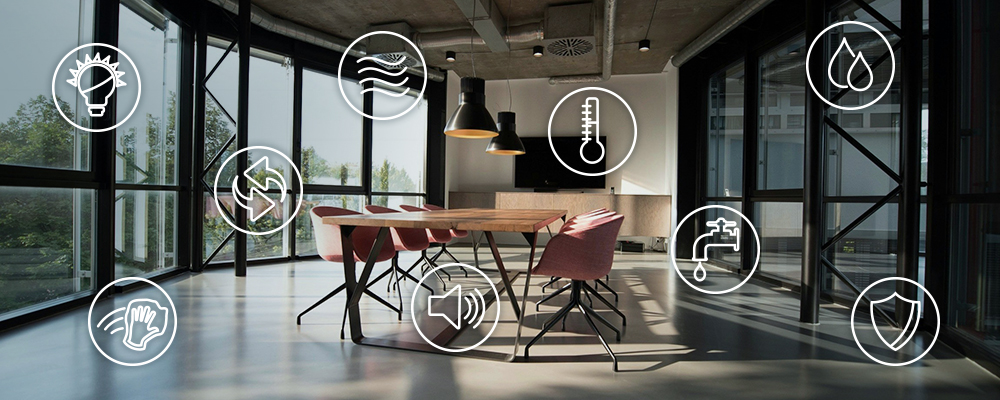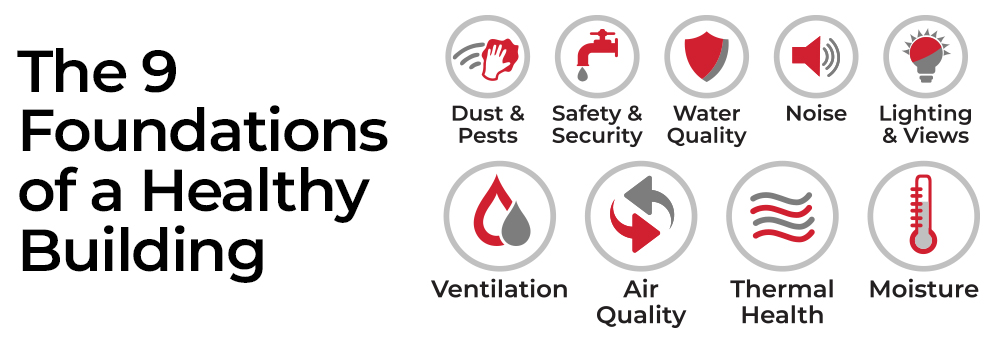


What is IEQ?
In the modern world, we spend so much time indoors that the indoor environment is practically our natural environment. So it’s only natural that we’re deeply affected by these interior spaces.
People can thrive in buildings with a healthy environment. But if there are issues with a building’s air, the results can be costly, both financially and in terms of human health.
Fortunately, there’s much that you can do to improve the environment within any four walls, starting with the air you breathe.
IEQ, Indoor Environmental Quality, concerns the impact of everything you feel, see, and hear inside a building. Natural daylight access, noise levels, and control over room temperature can all make a difference to IEQ.
The 9 Foundations of a Healthy Building
According to the Harvard T.H. Chan School of Public Health, when designing a building or maintaining a space, there are 9 foundations to consider for protecting human health and improving quality of life.
Addressing shortcomings in these areas is also vital to protecting productivity and controlling energy usage.

Ventilation
Meet or exceed local guidelines for outdoor air. Filter outdoor and
recirculated air with a minimum removal efficiency of 75% for all
particle-size fractions, including nano.
Air Quality
Choose supplies, furnishings, and building materials with low chemical
emissions. Check for lead, PCBs, and asbestos. Use a vapor barrier.
Maintain humidity levels between 30-60%.
Thermal Health
Meet minimum thermal comfort standards for temperature and humidity and
keep thermal conditions consistent throughout the day. Provide individual-level thermal control.
Moisture
Conduct regular inspections of roofing, plumbing, ceilings, and HVAC
equipment. When moisture or mold is found, immediately address the source
and dry or replace contaminated materials.
Dust & Pests
Use high-efficiency filter vacuums and clean surfaces regularly. Seal
entry points, prevent moisture buildup, and remove trash. Avoid pesticide
use.
Safety & Security
Meet fire safety and carbon monoxide monitoring standards. Provide
adequate lighting and use video monitoring, interactive patrols, and
incident reporting. Maintain an emergency action plan.
Water Quality
Meet the U.S. National Drinking Water Standards. Install a purification
system, if necessary. Ensure residual disinfectant levels are sufficient
to control microbes but not in excess. Prevent stagnation in pipes.
Noise
Protect against outdoor noises and control indoor noise, such as
mechanical equipment. Provide spaces that minimize background noise to
35dB and have a maximum reverberation time of 0.7 seconds.
Lighting & Views
Provide as much daylight and/or high-intensity blue-enriched lighting as
possible. Provide direct lines of sight to windows from all
workstations. Incorporate nature and nature-inspired design indoors.
As a global leader in air filtration solutions, American Air Filter has the expertise and products to help protect the air quality in your environment. Contact an AAF representative to discuss the best filtration strategy for your facility needs.